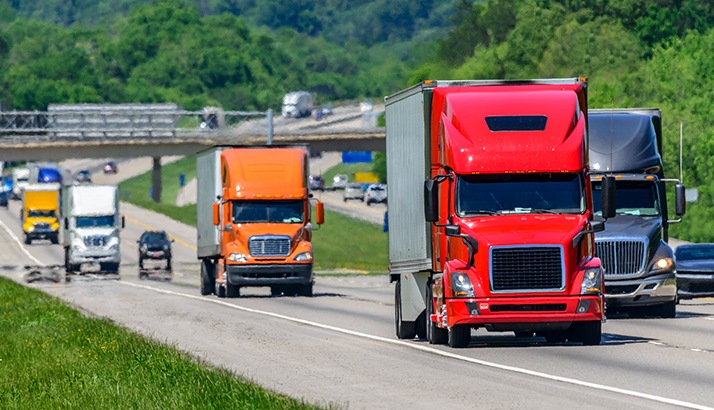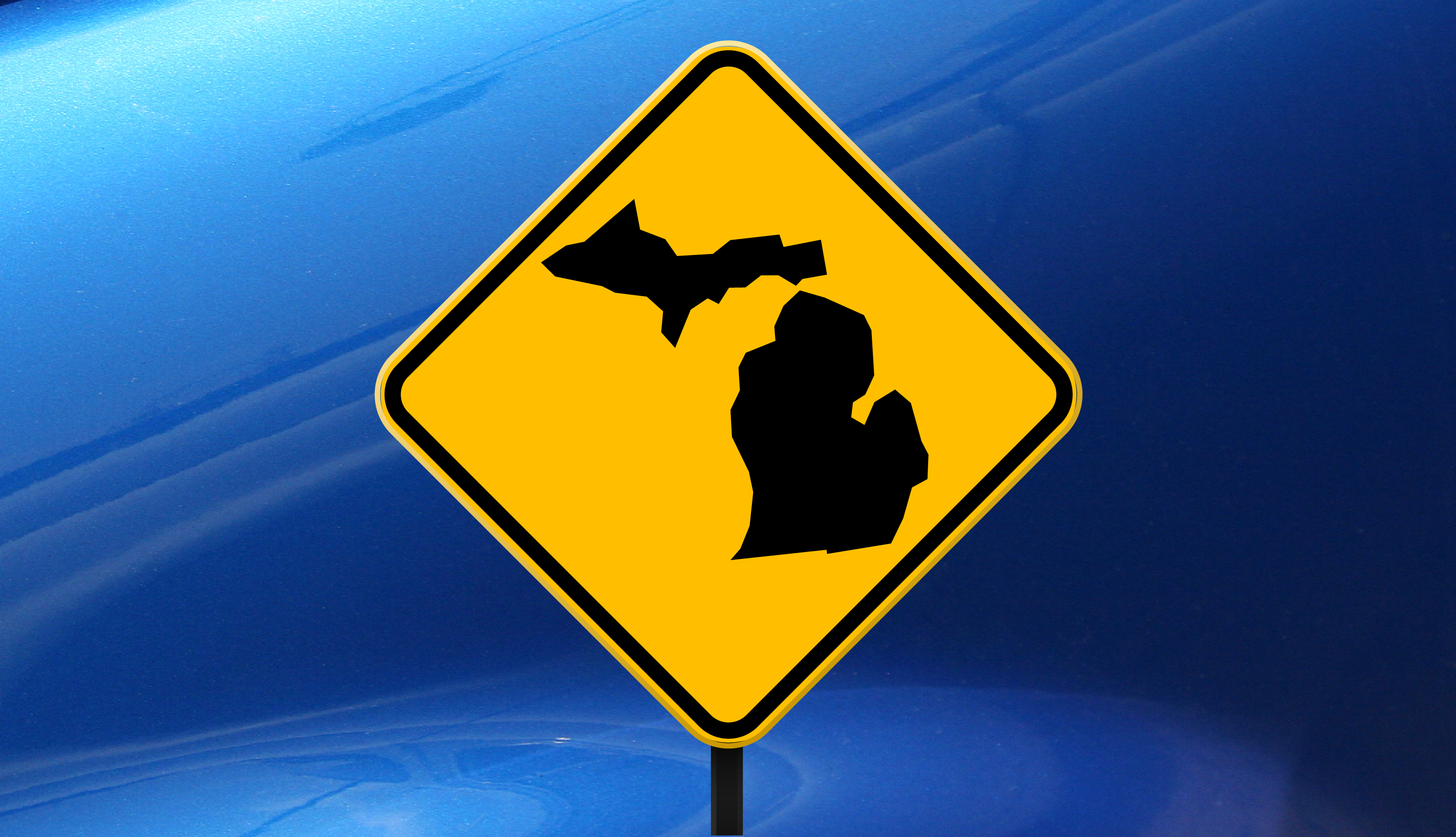Turning the Page on the MCS-90
Posted on 07/13/20 by Matt Westphalen, Vice President, Product Development & Compliance
We covered the basics of the operation of the MCS-90 Endorsement on a previous blog post outlining how it relates to an insurance policy. To take it a step further, you may have noticed the somewhat cryptic third page of the MCS-90, titled “Schedule of Limits – Public Liability,” which is displayed below.1 This Schedule of Limits is prescribed by §387.9 of Title 49 of the Code of Federal Regulations (CFR)2 and outlines the minimum auto liability limits motor carriers must carry to be in compliance with federal regulations, as well as interacts with a number of other 49 CFR regulations (highlighted in blue font). Refer to these regulations for an exhaustive or legal analysis; however, for a high-level explanation, please read on.
.png?width=600&name=Schedule%20of%20Limits-Public%20Liability_MCS-90(2).png)
Motor Carrier Terminology
Let’s begin by defining some of the terms used on this page to establish a common understanding:
Intrastate commerce: Shipments that begin and end within the borders of one state. Example: A shipment of cheese from Green Bay, WI to Milwaukee, WI.
Interstate commerce: Shipments that cross one or more state borders during the course of transportation. Example: A shipment of beer from Milwaukee, Wisconsin to Chicago, Illinois.
Foreign commerce: Shipments crossing a US border or boundary. Examples include: Truck shipments of car parts from Mexico, or containers of merchandise from Asia arriving at the port in Oakland, California.
Hazardous materials: Substances or materials that the Secretary of Transportation has determined are capable of posing an unreasonable risk to health, safety, and property when transported in commerce.3 Hazardous material shipments are required to be labeled with placards (explained below) during transport.
Nonhazardous goods: Goods or products that are not defined in federal regulations as hazardous, and pose no significant risk to health, safety, and property, and are therefore not required to be labeled with hazardous materials placards.
Hazardous Materials Placards: The square labels affixed to the sides of trucks and trailers, which identify the class of hazardous material being transported. Their purpose is to provide a quick identification of the product being transported. Images of placards for the Nine Classes of Hazardous Materials are displayed below.4
.jpg?width=600&name=Nine%20Classes%20of%20Hazardous%20Materials_MCS-90(3).jpg)
For Hire Motor Carrier: A motor carrier in the business of transporting, for compensation, the goods or property of another.5 This implies that a for-hire motor carrier, in this context, is transporting federally regulated commodities and holds Federal Motor Carrier Safety Administration (FMCSA) interstate operating authority.
Private Motor Carrier: A motor carrier that is owned and operated by a business, which has the sole purpose of transporting that business’ own products.
Types of Carriage
Motor carriers whose operations fall under one of the four Types of Carriage described in the Schedule of Limits are subject to the federal public liability requirements outlined in the MCS-90. Please note there may be operations absent from the Type of Carriage descriptions, indicating they are not subject to the federal public liability requirements, such as private carriers transporting only nonhazardous property.
Putting it All Together
When you know the Type of Carriage and the types of commodities transported, you can determine the required minimum limit of insurance, by working horizontally across the applicable row in the Schedule of Limits.
In practice, many motor carriers transport multiple types of commodities that may require different limits. Each motor carrier will need to carry the highest limit required, based upon the range of all the commodities that they transport. Here are some simple examples:
Motor Carrier A: Private motor carrier transporting only gasoline in interstate commerce.
Carrier A’s operation falls under Type of Carriage (3) because gasoline falls under regulations covering “Oil.” The required to minimum liability limit is $1 million. The capacity of the trucks/trailer does not matter, as the $1 million limit requirement applies to any quantity of gasoline transported by a private motor carrier for interstate shipments.
Motor Carrier B: For-hire motor carrier that transports only general non-hazardous property in interstate commerce under their FMCSA operating authority.
Carrier B’s operation falls under Type of Carriage (1) because they are not transporting any hazardous materials. The required minimum liability limit is $750,000. Note that the limit requirement applies only if the gross vehicle weight ratings are 10,000 lbs. or more.
Motor Carrier C: For-hire motor carrier that transports Liquefied Petroleum Gas (Propane or LPG) in 11,500 gallon bulk propane transport trailers (tractor/trailer combinations), in interstate commerce under their FMCSA operating authority.
Carrier C’s operation falls under Type of Carriage (2) because LPG is a bulk Division 2.1 hazardous commodity, while being transported in trailers having a capacity in excess of 3,500 water gallons, and a gross vehicle weight rating of more than 10,000 lbs. The required minimum liability limit is $5 million.
Using 49 CFR as the roadmap, a number of additional combinations can be developed in a similar manner. We hope this explanation has provided you with a better understanding of that brief, but important, final page of the MCS-90 Endorsement.
Sources
1 Federal Motor Carrier Safety Administration. Form MCS-90: Endorsement for Motor Carrier Policies of Insurance for Public Liability under Sections 29 and 30 of the Motor Carrier Act of 1980. OMB No.: 2126-0008. Accessed May 15, 2020.
2 Electronic Code of Federal Regulations. Title 49, Subtitle B, Chapter III, Subchapter B, Part 387, Subpart A, Subsection 387.9 Financial Responsibility Minimum Levels.
3 Electronic Code of Federal Regulations. Title 49, Subtitle B, Chapter I, Subchapter C, Part 171, Subpart A, Subsection 171.8 Definitions and Abbreviations. (Hazardous Substances and Hazardous Waste are also defined in this subsection)
4 Federal Motor Carrier Safety Administration. Nine Classes of Hazardous Materials. Accessed May 15, 2020.
5 Electronic Code of Federal Regulations. Title 49, Subtitle B, Chapter III, Subchapter B, Part 387, Subpart A, Subsection 387.5 Definitions.
Topics

Matt Westphalen is the Vice President of Product Development & Compliance at Old Republic Risk Management. He leads the teams responsible for maintaining and developing insurance products and services, workers' compensation rating and premium audits, and loss control services. Matt is also responsible for managing Old Republic's regulatory compliance obligations associated with the insurance products and services offered. Matt is based out of our corporate office in Brookfield, WI.



